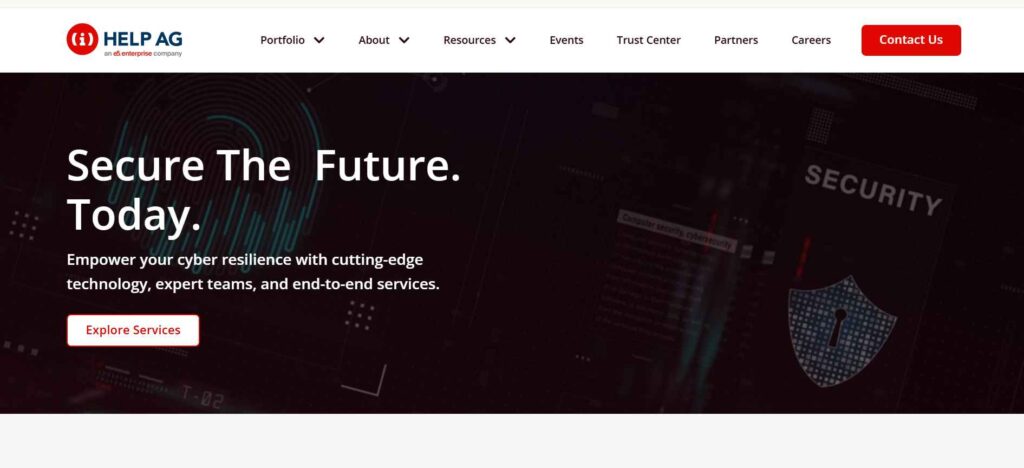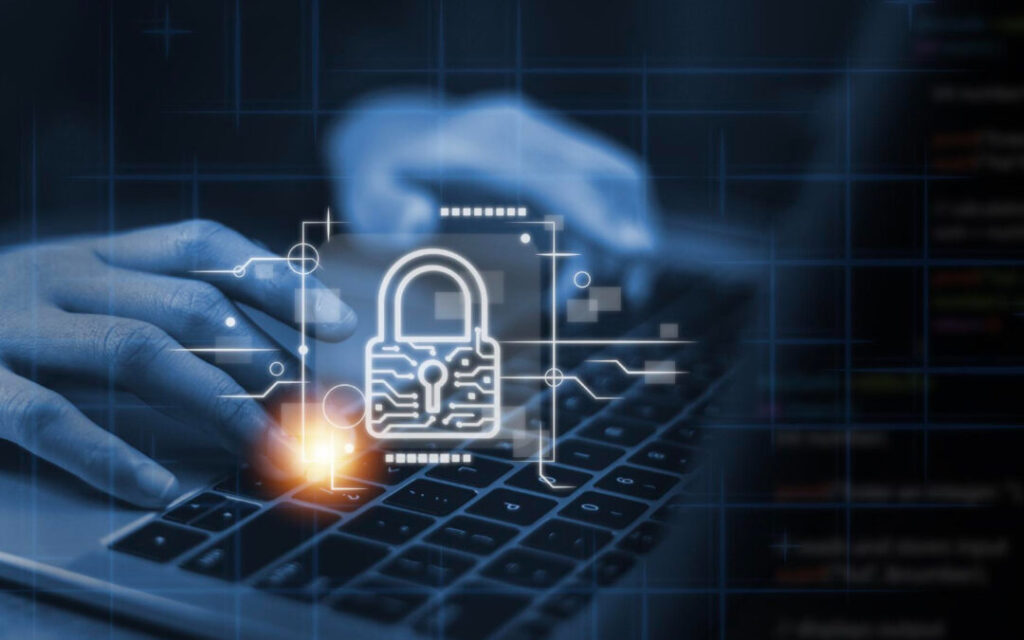30 Top Facts For Choosing A Cybersecurity Company in UAE
30 Top Facts For Choosing A Cybersecurity Company in UAE
Blog Article
Top 10 Tips To Evaluate The Experience And Reputation Of A Cyber Security Services Firm In Dubai Uae
1. Review Industry Experience
Consider companies that are well-versed in cybersecurity. Consider the length of time they've been operating and whether they have collaborated with companies similar to yours. A company that has a demonstrated track history is more likely understand your specific requirements and issues.
2. Review Client Portfolio
To determine the breadth and depth of expertise, take a look at the company's portfolio. Companies that have successfully served many industries, including ones that are relevant to your needs, will show flexibility and adaptability.
3. Study case studies and read success stories
Request case studies, or stories of success that showcase the firm's successes when it comes to addressing cybersecurity problems. You can get a better understanding of the company's capabilities by requesting detailed examples of how the company has reduced risks and solved issues that other customers have had.
4. Research Online Reviews and Ratings
Look up reviews and ratings on platforms such as Google, copyright or forums that are specific to your field. Positive reviews from clients may suggest a good reputation, however, negative feedback may indicate potential negative signals. Look out for common themes in the feedback provided.
5. Connect with Industry Peers
Connect with other professionals in your field to receive suggestions and information about cybersecurity service providers. If you talk to those who have used a service, you can gain important information regarding their reliability.
6. Look over the thought leadership and contributions
Investigate whether your company contributes to the cybersecurity community via ideas leadership. Contributions to blogs, forums and industry events can be incorporated along with the publication of whitepapers. Companies that share knowledge are often more credible and respected.
7. Verify certifications and partnerships
Examine any professional certifications or partnerships with top technology companies. Membership in well-known cybersecurity organisations or tech companies can indicate that the company meets high standards of competence and has been reputable in the sector.
8. Inquire About Staff Qualifications
Take note of the qualifications and experience of every employee. See if any of their employees have certificates such as copyright, CISM or CEH. A highly qualified team will improve a company's capacity to deal with cybersecurity risks, and also improve its reputation.
9. Review the Security Response Incidents
Inquire about how the firm has responded to security incidents. The ability of the company to respond to security incidents will reveal their readiness and knowledge. Understanding how they handle crisis management will give you insight into their operational effectiveness.
10. Seek out Awards and Recognition
Look for any awards or other recognitions within the cybersecurity industry. Industry awards may indicate an organization's credibility and superior service. Awards from respected organizations typically reflect a commitment to excellence and professionalism. Check out the best Cybersecurity Company in UAE for site tips including data secure, cybersecurity and ai, network and security solutions, network security in cyber security, cyber security services near me, cybersecurity consulting services, it security logo, network security software, cyber security business, cybersecurity consultancy and more.
Top 10 Tips For Assessing The Capabilities Of Incident Response Within A Cybersecurity Services Company
1. Understanding Incident Response FrameworkBegin your research by examining the incident response framework the business uses. If the framework is clearly defined, as in the NIST Cybersecurity Framework, or SANS Incident Response Process for instance, it means that the organization adheres to industry-standard practices to manage incidents effectively. Be sure that the company has a structured approach for handling incidents.
2. Evaluate Incident Response Team Expertise
Assess the qualifications and experience of the incident response team members. Look for certifications, such as Certified Incident Handlers and Certified Information Security Professionals. A knowledgeable team is crucial for effectively managing and mitigating incidents.
3. Review past incident response Case Studies
Ask for case studies or examples of previous incidents the business has dealt with. Analysis of their responses to real-life scenarios can provide insight into the company's effectiveness, speed and overall management approach. Learn in depth how they identified, contained, or resolved incidents.
4. Check for 24/7 Incident Response Incident Response Availability
Check if they offer emergency response 24/7. Cybersecurity-related incidents can happen at any moment. If you have a 24/7 team, you can limit the impact and time to recover.
5. Learn more about incident detection tools
Assess the tools and technologies the company utilizes for monitoring and detection of incidents. Effective detection tools like Security Information and Event Management systems and Intrusion Detection System (IDS) are crucial to quickly identify potential threats.
6. Examine Communication Protocols
Examine any communication protocols the business uses in an incident. To coordinate responses, educating the stakeholders and making sure that all parties are aware of their roles, clear and effective communications are crucial. It is important to understand how the business keeps its clients informed about all aspects of the response.
7. Review Post-Incident Review Processes
Find out about the processes employed by your company to review incidents. It is important to conduct thorough review following an incident in order to discover any lessons to be taken away. Companies that make adjustments in response to the reviews will be more efficient.
8. Evaluate Recovery and Remediation Strategies
Learn the strategies your business employs to recuperate from an incident and rectify any issues. Effective recovery plans will outline the process of restoring data and systems and taking care of any vulnerabilities that could cause repetitions. Find out their plan for recovering systems and securing them following an incident.
Verify compliance with regulatory requirements.
Check that the company's emergency response capabilities align with relevant regulations. Based on the type of business you operate in, there may be specific requirements regarding reporting incidents and response. Compliance can be ensured by a company who is knowledgeable of these regulations.
10. Ask for references and testimonials.
Additionally, you may request references from existing clients who used the service. Testimonials from customers are an excellent method to get valuable information about the efficiency of, the reliability the service, and the overall satisfaction with response during incidents. Read the most popular penetration testing dubai for blog tips including managed it services security, cyber cyber security, information security logo, information security, digital security, learn computer security, security solution, security solution, information security description, cybersecurity consultancy and more.
Top 10 Suggestions For Evaluating The Security Awareness Education Provided By An Organization That Provides Cybersecurity Services
1. Review the content of the training. Make sure that you cover key subjects, like Phishing (social engineering) as well as password security compliance, and protection of data. In order for employees to be capable of recognizing and responding to threats, a comprehensive training program is essential.
2. Customization Options
Request if you can tailor the training program to suit your particular needs and its culture. Customizing your training to meet unique challenges and scenarios which are encountered by employees of your business can improve relevance and engagement.
3. Assessment of Training Delivery Methods
Investigate the various delivery methods that are used to train. Options may include in-person workshops as well as webinars, online courses, as well as interactive simulations. You can increase efficiency of learning by mixing different styles.
4. Look for Interactive Elements
Check if your training has interactive elements such as questions, scenarios, or simulations. Interactive training improves learning retention and engagement, making it easier for staff to use the knowledge they've acquired in real situations.
5. Examine the frequency and updates
Find out the frequency at which training sessions are conducted and the training content updated. Due to the constant evolution of cybersecurity threats regular training sessions as well as timely revisions to the curriculum are crucial to keep employees informed about the most recent threats and best methods.
6. Measurement effectiveness
Know how your company assesses the efficacy of their training programs. There are metrics such as pre-and post-training evaluations, participant feedback, and trends in incident reporting. The impact of the program can be used to determine its value and pinpoint areas to improve.
7. Check Certification and Compliance
Find out if the program provides certificates upon completion. The certifications will increase the credibility of employees and demonstrate that they have learned the relevant skills. Be sure to align the training to any pertinent regulatory compliance needs your organization has.
8. Look up testimonials and references.
Testimonials from past clients are an excellent way to evaluate the effectiveness of your training. Testimonials may provide valuable insight about the efficacy and impact of the course. Positive feedback is an indication of trustworthiness in the field of providing awareness training that is effective and has impact.
9. Assess Post-Training Assistance
After the course, you should inquire for any assistance you receive. Information such as newsletters, refresher courses or access to an online knowledge database can enhance training and keep cybersecurity in the forefront of employees' minds.
10. Review Engagement and Cultural Building
Then, consider whether your training program helps in the development of a culture which promotes security in your organization. You should look for initiatives that promote awareness, like seminars, newsletters about security or competitions. A strong security culture ensures that employees are involved in protecting the business. View the recommended iconnect for blog recommendations including cyber cyber security, information security information, computer security company, security in data, managed security, cyber security analyst, cyber security technology, learn computer security, cyber security business, it security description and more.